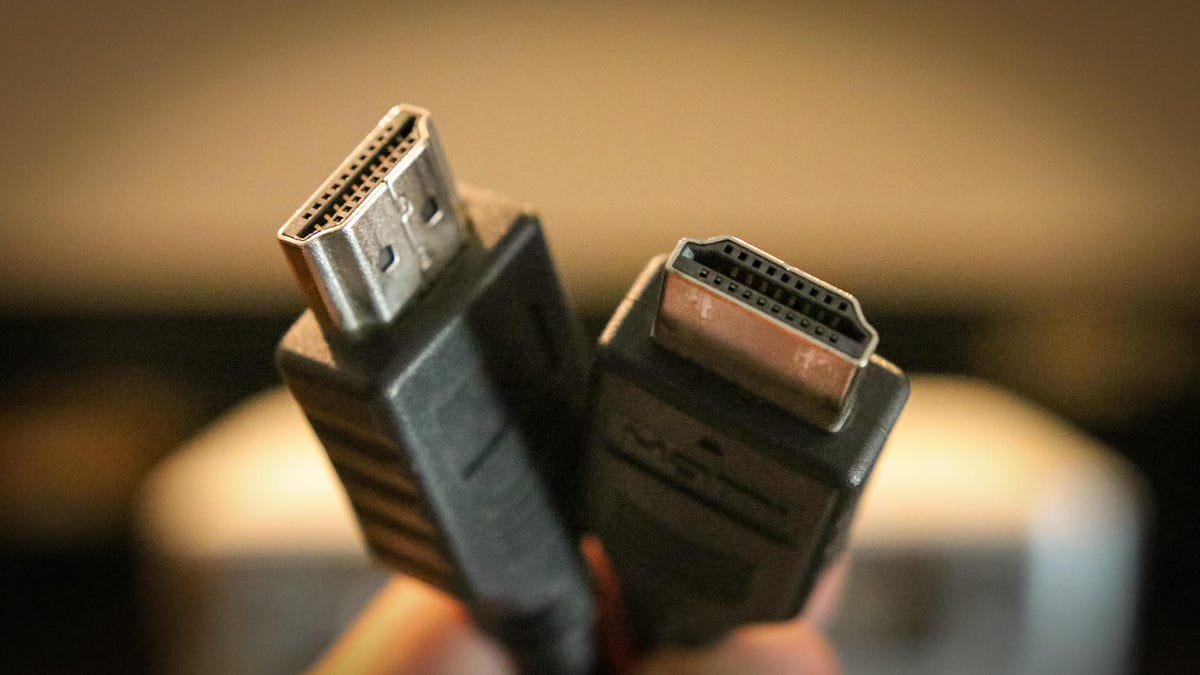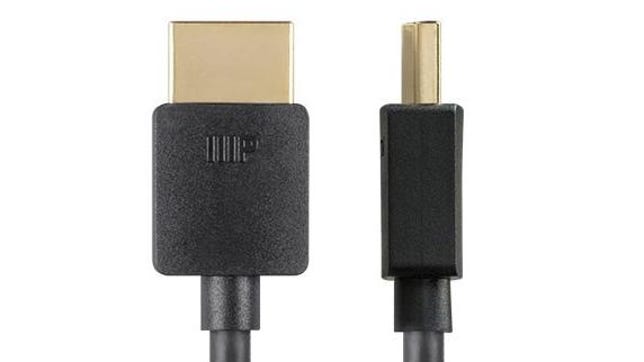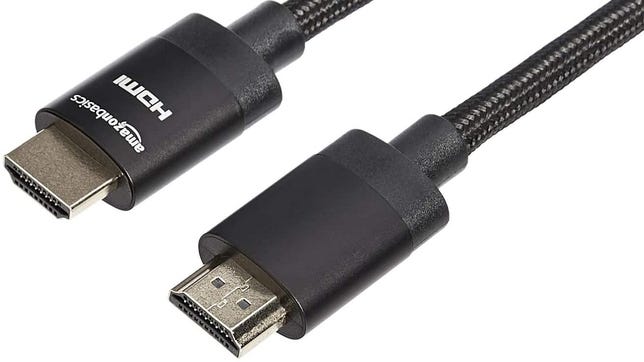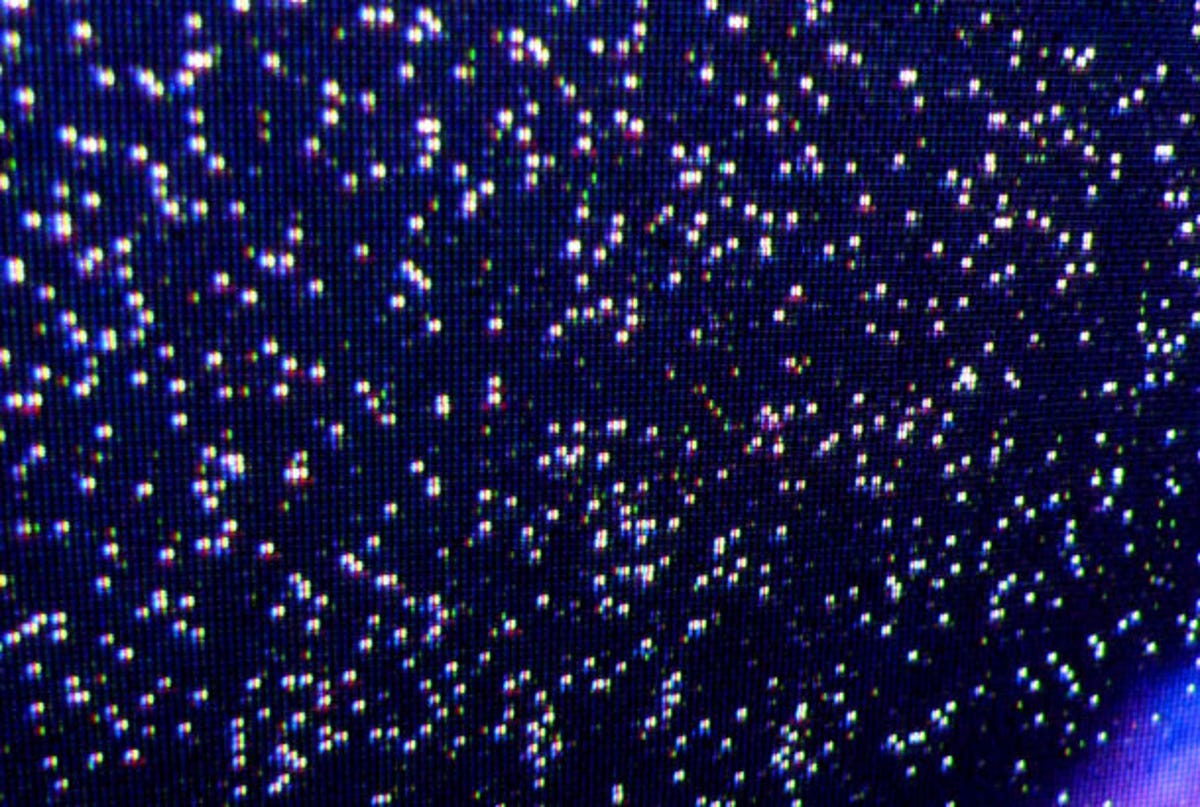The 4 Best HDMI Cables for 2022
HDMI cables are handy items to have if you want to hook your game console, Blu-ray player or media streamer up to your TV. It’s good to have a few lying around the house because they’re the most common way to connect accessories to your TV. And luckily there are plenty of well-performing and budget-friendly cables on the market.
Even the cheapest HDMI cables can still handle 4K HDR signals nowadays, so there’s no reason to drop serious cash on one — unless you happen to have a cutting-edge 8K TV. But even in a level playing field, some cables are slightly better than others. Below, you’ll find our top picks for reliable and affordable HDMI cables for gaming consoles, TVs, computers, cable or satellite boxes, home theater receivers or DVD, Blu-ray and Ultra HD players.

Geoffrey Morrison/CNET
While there are some more expensive options out there, as long as the cable is able to pass the resolution you want, it will look the same as any other cable that can pass the resolution you want, regardless of price. The only thing you really need to think about is cable length. So grab your game console, plug in your cable box and fire up your streaming device. Here are our picks for the best HDMI cable.
Read More: Best 4K TVs for 2022
Cable recommendations (6 feet): AmazonBasics or Monoprice
I used 6-foot (1.8-meter) cables as the example for pricing, but of course there are longer and shorter options. You can save some money getting shorter cables, but make sure they’re long enough for you to place your gear where you want. Measure twice, buy once.

Monoprice
The most famous of the cheap HDMI brands, Monoprice has dozens of options to choose from, including the Monoprice Select Series. The linked cable is “Premium Certified.”
Monoprice’s are among the least expensive Premium Certified cables out there. It has longer and thicker versions as well. It should also be considered the best HDMI cable for many people’s needs. And just like Amazon, there’s a lifetime warranty.
You’re receiving price alerts for Monoprice High Speed HDMI Cable – 6 Feet – Black| Certified Premium, 4K@60Hz, HDR, 18Gbps, 36AWG, YUV, 4:4:4 – Ultra Slim Series

Amazon
Cables labeled “Premium Certified” are rated to be able to handle the highest resolutions and frame rates. A cable doesn’t need this label, but having it ensures a certain level of compatibility. So if you want to be absolutely sure your cable can handle 4K at 120 frames per second from your new PS5 or Xbox Series X, this is the easiest way to do that. Fortunately, there isn’t much of a price premium for Premium Certified cables. These AmazonBasics cables, for instance, are only a few dollars more than the non-certified versions. This is likely to be the best HDMI cable for many people, but keep in mind that the best HDMI cable for you will meet all your needs.
Why are these two brands considered the best HDMI cable? Because they’re the cheapest ones we trust and they have great warranties.
We don’t specifically review HDMI cables here at CNET, but in our TV test lab we’ve been using inexpensive cables from Amazon and Monoprice for years. All of them have carried hundreds of hours of 4K and HDR video flawlessly, with way more plugging and unplugging than typical cables are subject to. None have failed with compatible devices.
There are cheaper options, but beyond our own experience, these two have great user reviews and have sold HDMI cables for years. They’re also rated to have the bandwidth to handle 4K and HDR content. This is often listed as “18Gbps,” referring to the amount of bandwidth possible, in gigabits per second, with the HDMI 2.0 standard (see below for HDMI 2.1 details).
Other options
Maybe you don’t want a Monoprice or Amazon HDMI cord for some reason. We checked a few other large retailers and found cables we liked from each one. Here they are.
Walmart’s marketplace has dozens of HDMI cables. Of the ones the company seems to sell itself, evidenced by the “Free Pickup” tag, the Tripp Lite linked here claims in one place to be 18Gbps. If you dig down through the details you can find that it does have a lifetime warranty. I can’t see any reason to get this cable over Amazon or Monoprice, but it’s an option.
You’re receiving price alerts for Tripp Lite 6ft High Speed HDMI Cable Digital Video with Audio 4K x 2K M/M 6′ – HDMI cable – 6 ft
Target’s selection of regular HDMI cables is quite poor, with most unable to handle the full bandwidth of 4K HDR. One exception is a 4-foot Philips cable, which is relatively cheap at the moment. And maybe you have a Target gift card and nothing better to spend it on. They say it’s only rated to 10.2Gbps, however, so if transmission speed is your number one priority, you’re better off with one of the other options here.
You’re receiving price alerts for Philips 4′ High Speed HDMI Cable with Ethernet – Black
Do you really need new cables?
As we mentioned above, just because you’re getting a new TV doesn’t necessarily mean you need new HDMI cables, even if you’re upgrading to something with 4K and HDR. Over short distances, say under 6 feet, just about any recent “high speed HDMI cable” should work fine. “High Speed” is the rating used by HDMI companies to indicate cables that have the bandwidth to handle 1080p and greater video resolutions.
You can think of bandwidth like a pipe. You need to be able to get a lot of “water” through the pipe with 4K and HDR content. A high speed cable needs to be “big” enough to handle it all.
Unfortunately, there’s no way to tell just by looking at a cable whether it’s a high speed HDMI cable that can handle the deluge of data required for 4K and HDR content. Even if it says High Speed on the jacket, that’s not 100 percent useful. A cable can be considered a “high speed HDMI cable” if it passes 1080p, but not be well enough made to handle 4K. The only way to verify it works as high speed HDMI is to test it.
The good thing is, if it works, it works. For example, if you’re sending a 4K HDR signal from your 4K Blu-ray player to your 4K HDR TV and the TV shows a 4K HDR signal, you’re set. It’s not possible to get a better image using a different 4K HDMI cable. That’s not how the technology works.
There are only two “fails” with an HDMI cable. The most likely is you won’t get any signal at all: A blank or flashing screen. First, check that everything’s connected correctly and all your HDMI device settings are correct.

A closeup view of the HDMI cable failure known as sparkles.
Geoffrey Morrison/CNET
The only other “fail” mode of HDMI cables is sparkles. This looks like snow on the screen. It can be heavy enough to look like static, like an old TV tuned to a dead channel, or it can be random-but-regular flashes of white pixels. This means you’ll need new cables.
If the TV is receiving the same resolution you’re sending it (e.g., the TV says it’s 4K HDR when you’re sending 4K HDR), you’re all set. A different cable won’t make that image sharper, brighter or anything else.
Also remember, if one step in your chain isn’t 4K HDR, nothing is. As in, if you connect a 4K Blu-ray disc player to an old sound bar and then to a 4K TV, you won’t be able to get a 4K signal to the TV. Also, some TVs only have one or two HDMI inputs that are HDMI 2.1 compatible. Check your owner’s manual for that, too.
What about HDMI 2.1?
The latest version of HDMI is called 2.1. This is a huge leap forward in terms of bandwidth, capable of up to 8K resolutions and beyond. There are also new cables, called Ultra High Speed, but unless you’re buying an 8K TV you don’t need them. Actually, even if you are buying an 8K TV, you probably don’t need them.
For more info on that, check out HDMI 2.1: What You Need to Know.
Longer cables?
The vast majority of you will just need an HDMI cable of a few feet/meters to connect your TV to your nearby cable/satellite box, video streamer, 4K Blu-ray player, or game console. Some of you, though, are looking for something with a longer cable length. There are a lot of variables to consider, which we’ll discuss, so we don’t have a simple pick.
In broad strokes, the build and material quality is much more important in a long HDMI cable than short. Over 15 feet there is a much higher chance that a mediocre cable won’t work, or won’t work at the resolution you want. This still doesn’t mean you need to spend a fortune on a long cable, there are plenty of options for roughly the same price per-foot as the ones mentioned above. It does mean that no-name cables might be less likely to work.
To put it another way, a poorly made 3-foot cable will probably work fine for most people, but a poorly made 15-foot cable probably won’t. With any long-run solution you’re considering, make sure it can handle 4K/60, HDR and so on. Many options can’t. There are three technologies to consider:
Active: An active HDMI cable has a small chip built into the cable that takes a little power from the device’s HDMI connector and uses it to boost the HDMI signal. These cables cost a little extra, but are far more likely to work. A long passive cable might work for you, but it might not. It depends on your gear. Since they’re not significantly more expensive, they’re worth considering for any long run.
Optical: Though a similar technology to the old-school audio interface, HDMI-over-optical is capable of far greater bandwidth. It’s also capable of far greater distances. It’s easy to find options that are over 330 feet. Prices have dropped radically in the last few years, with options available for similar prices per-foot as traditional copper cables. Most don’t even need external power. They work and look just like a thin HDMI cable.
Wireless: You could also skip cables completely and just go wireless. This isn’t quite as simple as it sounds, though. There are far too many considerations to get into here, but a few things to keep in mind: 1) They’re going to cost more than cables; 2) 4K options often only work in-room and can be blocked by anything, including cabinet doors and even people. Though wireless seems like it should be easy for multiple devices in this era of near-ubiquitous Wi-Fi, it’s not. If you’re considering this, definitely do your research before you buy.
What’s up with AmazonBasics?
In 2020 a CNN article brought attention to a number of Amazon’s own products that have caught fire. It’s unlikely an HDMI cable alone will cause a fire, since the HDMI connection is low voltage. Like any copper cable, voltage can be transmitted over the cable, but that’s an issue with the source, the display or perhaps the lightning bolt hitting your house. For what it’s worth, out of 60,380 reviews of the AmazonBasics HDMI cable, only one mentions fire. There was no fire in that case, however: The reviewer’s cable melted for unknown reasons.
We don’t think the CNN report is a reason to dismiss AmazonBasics AV cables, but if you’re not comfortable with the idea, there are other options listed here, including Monoprice, which we’ve had in our labs and homes for years.
Connected thoughts
There are, of course, many other cable options.
If you want to keep hunting for the best deal, make sure the cable you’re considering is either Premium Certified, says it can do 4K/60, or can handle 18Gbps bandwidth. And it’s an added bonus if it has a great warranty like the Amazon or Monoprice cables.
Keep in mind there’s no such thing as HDMI cable “versions.” As in, there’s no such thing as an “HDMI 2.0” cable. The version numbers refer to the physical connections in your TV, receiver or sound bar. So your TV and 4K Blu-ray player need to both have HDMI 2.0 to watch HDR content, but the cable connecting them couldn’t care less. It’s just a dumb pipe.
As long as that pipe is “big” enough, which is to say it has enough bandwidth, you should be good to go. The 18Gbps you’ve seen mentioned here came about with the HDMI 2.0 spec, so if a cable claims it, it’s likely built to handle the additional data that HDMI 2.0 connections can provide. The new Ultra High Speed cables are capable of 48Gbps, but that’s far beyond what any current source can send.
Lastly, if you want to run the cables through a wall, make sure you get HDMI cables specifically made for that. Check your local building codes for the HDMI specification you need.
More home entertainment necessities
Originally published earlier and updated periodically.
As well as covering TV and other display tech, Geoff does photo tours of cool museums and locations around the world, including nuclear submarines, massive aircraft carriers, medieval castles, airplane graveyards and more.
You can follow his exploits on Instagram and YouTube, and on his travel blog, BaldNomad. He also wrote a bestselling sci-fi novel about city-sized submarines, along with a sequel.
For all the latest world News Click Here

